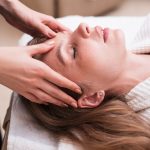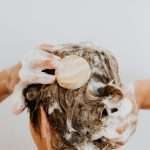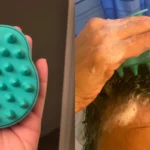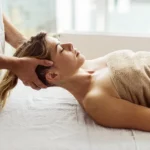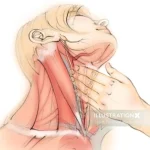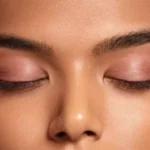If you’ve ever wondered how often you should massage your scalp, you’re not alone. Whether you’re trying to unwind after a long day or chasing longer, healthier hair, scalp massage has become a popular wellness ritual with real benefits. But just like any self-care practice, frequency matters. Overdo it, and you might irritate your scalp. Do it too little, and you could miss out on results—especially when it comes to scalp massage and hair growth. In this guide, we’ll explore how often you should be massaging your scalp, what benefits you can expect, and how to make the most of each session.
Table of Contents
Benefits of Scalp Massage
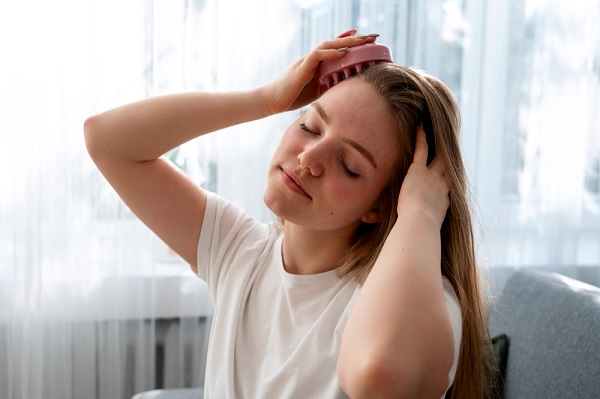
Scalp massage is a great way to promote overall hair health and growth. Massaging your scalp can boost circulation, help unclog and clear any blocked pores, and stimulate hair follicles. It can also help to relax the mind and reduce stress, which can help to avoid hair loss. Here are some of the benefits of scalp massage:
| Benefit | Explanation |
|---|---|
| Improves Circulation | Massaging your scalp improves blood circulation to the area and helps to bring more nutrients to the hair follicles. This increases the chances of hair growth and helps to keep hair looking healthy. |
| Stimulates Hair Follicles | Massaging your scalp can help to stimulate the hair follicles, which can help to promote new hair growth. It also helps to increase the strength of existing hair. |
| Relieves Stress | Massaging your scalp can help to relax the mind and reduce stress levels, which can help to prevent hair loss. It is also a great way to reduce stress-related headaches. |
| Reduces Scalp Tension | Massaging your scalp can help to reduce tension and tightness in the scalp, which can help to improve hair health and growth. It can also help to reduce scalp itching and flaking. |
In order to experience all the benefits of scalp massage, it is important to know how often you should massage your scalp for optimum hair health.
How Often Should You Massage Your Scalp?
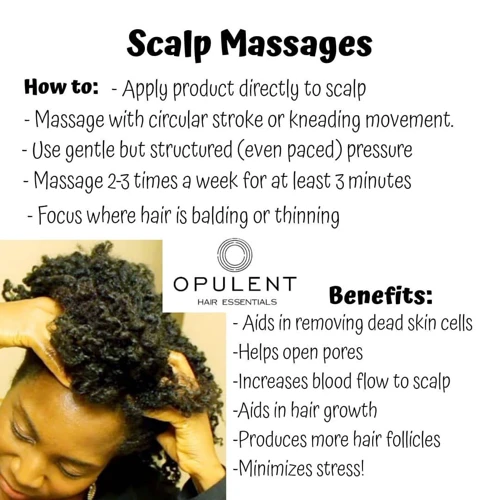
General Guidelines
Scalp massage is an excellent way to stimulate circulation and promote healthy hair growth. However, the frequency of scalp massages can vary according to individual needs. Ideally, scalp massage should be done at least once a week, but no more than three times a week.
For Hair Growth
If you’re looking to promote hair growth, then it’s best to do a scalp massage every other day. It is important to note that scalp massage should not be done too vigorously, as this can damage the scalp and cause irritation. To ensure maximum benefit, use a light touch and massage in circular motions.
With Oil
Using oil when performing a scalp massage can help to nourish the scalp and reduce dryness. Oils like coconut, jojoba, and argan oil are popular choices. For best results, apply a few drops of oil to the fingertips before massaging into the scalp. The massage should be done in small, circular motions for 5-10 minutes.
It is important to note that scalp massage is not a miracle cure for hair loss, but it can help to stimulate circulation and promote healthy hair growth. By using the right techniques and frequency, you can enjoy the benefits of scalp massage and keep your hair looking its best. So, how long does scalp massage work for hair? With regular use, you can enjoy the benefits of scalp massage for optimum hair health.
👉 Want to turn your shower into a scalp-care routine? Follow our step-by-step tips on how to massage your scalp while shampooing for better circulation and cleaner roots.
How Long Should a Scalp Massage Last?

Scalp massages provide many benefits for the scalp, such as improving circulation and promoting relaxation. But how long should you massage your scalp for optimal results?
| Type of Scalp Massage | Length of Massage |
|---|---|
| General | 5-10 minutes |
| Deep Tissue | 15-20 minutes |
| Reflexology | 30-45 minutes |
For a general scalp massage, a 5-10 minute session should be enough to increase circulation and relax the scalp. For a deep tissue scalp massage, a longer session of 15-20 minutes will be necessary to reach the deeper layers of muscles and tissues. Lastly, for a reflexology scalp massage, a 30-45 minute session is required to hit all the reflex points in the scalp.
It’s important to note that the massage length depends on the individual. If you’re looking to promote relaxation, shorter massage sessions can be beneficial. But if you suffer from chronic pain and tension in your scalp, you may need longer sessions.
Always listen to your body and adjust the massage length accordingly. If you feel discomfort or pain at any point during your scalp massage, stop immediately and consult a medical professional if necessary.
How to Massage Your Scalp with Oil

| Step | Instructions |
|---|---|
| 1 | Choose the right oil – not all oils are suitable for scalp massage. Look for natural oils such as coconut, avocado, argan, almond, and castor oils. |
| 2 | Warm up the oil – warm up the oil slightly before application. This will help the oil penetrate the scalp. |
| 3 | Massage the scalp – apply the oil to your scalp and massage it using your fingertips in circular motions. Make sure to cover your entire scalp, from the forehead to the nape of your neck. |
| 4 | Leave the oil on – leave the oil on your scalp for at least half an hour before washing it out. This will give the oil time to penetrate the scalp and nourish the hair follicles. |
| 5 | Wash out the oil – use a mild shampoo to wash out the oil. Don’t use too hot water, as this can strip the scalp of its natural oils. |
Regular scalp massage with oil can help improve hair health. How often you should massage your scalp with oil depends on your hair type and scalp condition. Generally, it’s best to massage your scalp with oil once a week. This can help improve blood circulation and moisturize your scalp and hair.
👉 Looking to support thicker, healthier hair? Learn how consistent techniques and pressure make a difference in our complete guide to scalp massage for hair growth.
Which Oil is Best for a Scalp Massage?

Head massage with oil can help to improve hair health by nourishing the scalp and hair follicles. Different oils have different benefits, so it’s important to think about which oil will best suit your needs.
Coconut oil is a popular choice for head massage, as it is naturally antibacterial and antifungal, making it great for removing any harmful bacteria from the scalp and unclogging pores. Coconut oil also helps to nourish the scalp and improve circulation.
Olive oil is another good option for scalp massage, as it contains antioxidants which can help to strengthen the hair and protect against breakage. It also helps to deeply moisturize and nourish the scalp.
Castor oil is another popular oil used in scalp massage. It is known to help promote hair growth, as it contains ricinoleic acid which helps to increase circulation to the scalp and reduce inflammation.
Almond oil is a light oil which helps to strengthen the hair. It is also known for its ability to help reduce dandruff and keep the scalp hydrated.
Jojoba oil is a natural moisturizer which helps to soothe the scalp and reduce any itching or flaking.
| Oil | Benefits |
|---|---|
| Coconut | Antibacterial, antifungal, nourishes scalp, improves circulation |
| Olive | Antioxidants, strengthens hair, moisturizes scalp |
| Castor | Promotes hair growth, increases circulation, reduces inflammation |
| Almond | Strengthens hair, reduces dandruff, keeps scalp hydrated |
| Jojoba | Natural moisturizer, soothes scalp, reduces itching and flaking |
When using oil for head massage, always use a small amount and massage it into the scalp in gentle, circular motions. This will also help to stimulate the scalp and promote healthy hair growth.
Precautions
- Always use oil: While massaging your scalp, use quality oil such as coconut, olive, or almond oil. This will help to nourish your scalp and ensure that your hair stays healthy.
- Be gentle: Avoid using too much pressure while massaging your scalp as it can lead to irritation and even breakage of your hair.
- Start slowly: If you are new to head massages, start with a gentle massage and gradually increase the pressure.
- Monitor your scalp: Pay close attention to your scalp during the massage and stop immediately if you experience any discomfort.
- Avoid too much heat: If you are using a heated oil for your massage, be sure to check the temperature before applying it to your scalp.
Frequently Asked Questions
How often should you massage your scalp for hair growth?
For most people, 3–4 times per week is ideal for supporting hair growth. Regular scalp massage helps stimulate blood flow to the hair follicles, delivering oxygen and nutrients that support healthier hair cycles. If you’re specifically massaging for regrowth or thinning concerns, pairing frequency with the right technique matters—see our guide on how to give a good scalp massage for step-by-step methods 💆♀️
Is it safe to massage your scalp every day?
Yes, daily scalp massage is generally safe, as long as you use light to moderate pressure. Gentle daily massage can reduce tension, improve circulation, and promote relaxation without stressing the scalp. If you notice tenderness, redness, or increased hair shedding, reduce frequency to every other day. Using clean hands or a soft scalp massager helps avoid irritation and keeps the scalp healthy 🧴
How long should each scalp massage session last?
A scalp massage only needs 5–10 minutes per session to be effective. This is enough time to stimulate circulation, relax the scalp muscles, and encourage oil distribution without overstimulating the skin. Longer sessions won’t necessarily provide extra benefits and may increase sensitivity for some people. Focus on slow, circular movements rather than speed or pressure for the best results ⏱️
Can massaging your scalp too much cause hair loss?
Over-massaging your scalp won’t cause permanent hair loss, but excessive pressure or very frequent aggressive massage may lead to temporary shedding or irritation. This usually happens when the scalp is inflamed or stressed. If hair shedding increases after massage, ease back on frequency and pressure. Gentle techniques support scalp health, while rough handling can do the opposite ⚠️
Should you massage your scalp with oil, or is dry massage better?
Both methods work well—it depends on your goal. Dry scalp massage is convenient and great for daily circulation and relaxation. Oil massage, done 1–2 times per week, adds nourishment and helps condition the scalp, especially if you experience dryness or flaking. Use lightweight oils and wash thoroughly afterward to avoid buildup that could clog follicles 🌿
Final Thoughts
Massaging your scalp regularly has many benefits for hair health, including improved blood circulation, stimulation of hair follicles for growth, and removal of product buildup. The frequency of scalp massages depends on individual hair needs, though ideally once or twice a week is recommended. With regular scalp massages, you can improve the health of your hair and keep it looking and feeling its best.
Reviewed December 2025 by John Winter, Licensed Massage Therapist
References
- National Library of Medicine – Standardized Scalp Massage Results in Increased Hair Thickness by Inducing Stretching Forces to Dermal Papilla Cells in the Subcutaneous Tissue
- Healthline – Can a Scalp Massage Help Your Hair Grow?
- How to Keep Your Scalp Healthy
⚠️ Disclaimer:
This article is for informational purposes only and does not constitute medical advice. Always consult with a licensed healthcare provider or certified massage therapist before beginning any new treatment, especially if you have pre-existing health conditions or concerns.



